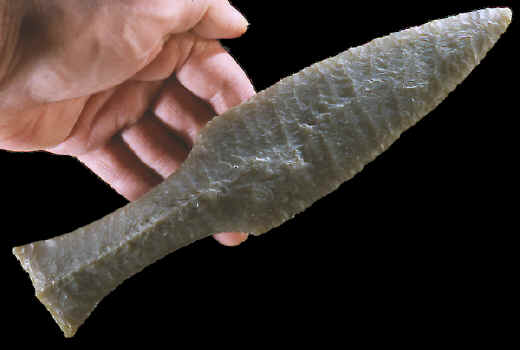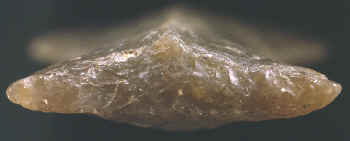|
TYPE IV DANISH DAGGER (CAST) By Errett Callahan Ph.D
This is an example of the most remarkable of all Danish Neolithic flint dagger
types. It is different from the preceding types in several ways. The butt of
the handles of Type IV Daggers is typically flared rather than straight. Also,
the zigzag seam stitching on the handles are typically (though not
exclusively) on the topside only, creating a trihedral cross-section in that
area. Plus, the handles of Type IV Daggers are notably thinner than wide.
This picture shows the end view of the handle of a type IV Danish dagger. The cross-section of type IV dagger handles that have stitched or zigzag flaking on one side only, like this one, look like wide three sided triangles. |
|
"REFERENCES"
1872,
Sir John Lubbock, "Pre-Historic Times, Ancient Remains and the
Manners & Customs of Modern Savages" |

